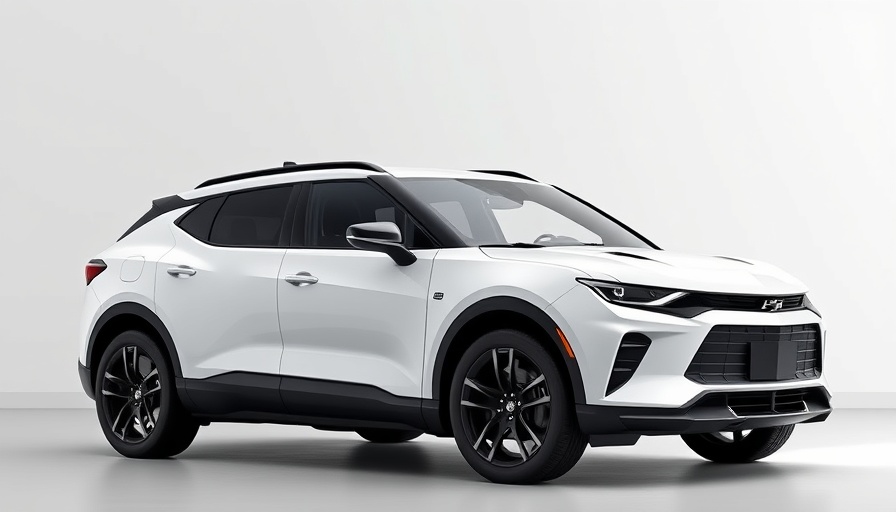
The Future of the Camaro: Embracing Electrification
The iconic Chevy Camaro, a name long synonymous with American muscle cars, is on the brink of a transformation that might surprise longtime fans. Instead of resurrecting the legendary coupe that fans have come to adore, Chevrolet plans to reintroduce the Camaro as an electrified SUV. This shift reflects a broader trend in the automotive world where traditional two-door sports cars are being overshadowed by the burgeoning popularity of electric SUVs.
How the Camaro Flips the Script
The Camaro's evolution into an electric SUV comes as the automotive industry navigates the ongoing shift towards electrification. As consumers increasingly flock toward practical yet stylish vehicles, Chevrolet aims to harness the Camaro's heritage to attract both past enthusiasts and an emerging audience seeking eco-friendly options. With the Ford Mustang Mach-E already making waves in the market, Chevy will face both pressure and opportunity in this electrified showdown.
Performance Meets Sustainability
The new Camaro EV is designed to ride on General Motors' next-generation skateboard architecture, commonly referred to as the Ultium platform. This modular foundation provides flexibility in battery size and motor configuration, allowing for a range of performance options. The entry-level variants could feature a single rear-mounted motor producing between 241 to 365 horsepower, effectively catering to buyers who might prioritize efficiency over raw power. Meanwhile, mid-tier models will likely offer more robust performance, aiming for enthusiasts craving that muscle car experience.
Specs That Turn Heads: A Closer Look
The implementation of high-powered variants marks a significant commitment to performance. The Camaro SS is projected to replicate the Blazer EV SS’s power setup, pushing out around 615 horsepower. For the truly performance-hungry, there may even be a tri-motor version inspired by the GMC Hummer EV, potentially cranking out nearly 1,000 horsepower. These models are expected to resonate deeply with fans who cherish the Camaro's fast and furious legacy.
Pricing and Market Strategy: What to Expect
Pricing for the forthcoming Camaro EV is projected to start around $36,000, extending up to $65,500 for the higher performance trims. Chevrolet plans to initiate its launch strategy with mainstream trims slated for release in the fall of 2026, gradually rolling out performance-focused models. With this tactical approach, Chevy aims to present a well-rounded lineup that appeals to a diverse demographic across the auto market.
The Road Ahead: Implications for the Auto Industry
Chevrolet's decision to electrify one of its most cherished nameplates underscores the vast changes transforming the automotive landscape. The typical car enthusiast now faces an evolving definition of performance — one that encompasses electric powertrains alongside traditional gasoline engines. The Camaro’s electric debut could set a precedent for other manufacturers contemplating similar pivots.
Consumer Sentiment: A Mixed Bag
While excitement brews among progressive consumers eager for the new technological shift, traditional car enthusiasts may exhibit skepticism regarding an electric Camaro. The key challenge will be for Chevy to maintain the driving experience that made the Camaro an icon while simultaneously innovating for the future. How well Chevy navigates these waters could have substantial implications for its brand image in the long run.
A Legacy Continues: The Camaro's Impact
If the complete transition to an electric SUV is successful, it will mark a new chapter for the Camaro while preserving its storied legacy. This bold step could resonate well, reminding us that change is a necessary process for growth in the automotive industry. By building an electric model that honors its heritage yet embraces modern advancements, Chevrolet is not just reviving a name; they are reimagining what that name will represent in the future.
As the automotive industry heads toward a future that intermingles dynamism and sustainability, Chevrolet's electrified Camaro could cleverly straddle the line between tradition and innovation.
 Add Row
Add Row  Add
Add 




Write A Comment